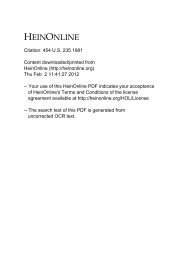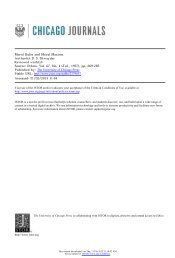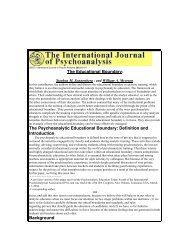Copyright by Gregory Krauss 2007 - The University of Texas at Austin
Copyright by Gregory Krauss 2007 - The University of Texas at Austin
Copyright by Gregory Krauss 2007 - The University of Texas at Austin
Create successful ePaper yourself
Turn your PDF publications into a flip-book with our unique Google optimized e-Paper software.
etween personalities and more as a competition amongst the foreign policymaking<br />
bureaucracies: the Department <strong>of</strong> St<strong>at</strong>e, the Department <strong>of</strong> Defense, the N<strong>at</strong>ional<br />
Security Council, the Central Intelligence Agency, and other agencies. 21 <strong>The</strong> same<br />
sort <strong>of</strong> competition for influence occurs within agencies, according to Halperin. 22<br />
Thus, in both the Brown and Halperin models, the foreign policymaking appar<strong>at</strong>us is<br />
crowded with advisors; the opportunity for top-level <strong>of</strong>ficials to wield decisive<br />
influence is limited—and correspondingly more so for mid-level <strong>of</strong>ficials.<br />
A mid-level bureaucr<strong>at</strong> in Lister’s time wishing to make a mark on foreign<br />
policy might have had other difficulties, according to many depictions <strong>of</strong> U.S. foreign<br />
policymaking. Schlesinger notes in A Thousand Days, his chronicle <strong>of</strong> the Kennedy<br />
years, th<strong>at</strong> the Foreign Service had grown rapidly from 1700 members in 1930 to over<br />
9000 members in the 1960s. 23 During th<strong>at</strong> time, the St<strong>at</strong>e Department moved from a<br />
smaller building near the White House to its current home <strong>at</strong> Foggy Bottom. 24 With a<br />
larger St<strong>at</strong>e Department came increased bureaucr<strong>at</strong>iz<strong>at</strong>ion and hierarchy. Schlesinger<br />
writes th<strong>at</strong> a system <strong>of</strong> concurrences was cre<strong>at</strong>ed “which required every proposal to<br />
run a hopelessly intric<strong>at</strong>e obstacle course before it could become policy.” 25<br />
Aside from the limited opportunities for influencing major foreign policy<br />
decisions, Halperin notes a set <strong>of</strong> incentives which limit the chances th<strong>at</strong> individuals<br />
within bureaucracies will actually want to take initi<strong>at</strong>ive or chances. According to<br />
Halperin, because a bureaucr<strong>at</strong>ic organiz<strong>at</strong>ion’s influence is itself limited, such<br />
organiz<strong>at</strong>ions tend to favor policies th<strong>at</strong> have the effect <strong>of</strong> expanding organiz<strong>at</strong>ional<br />
4

















